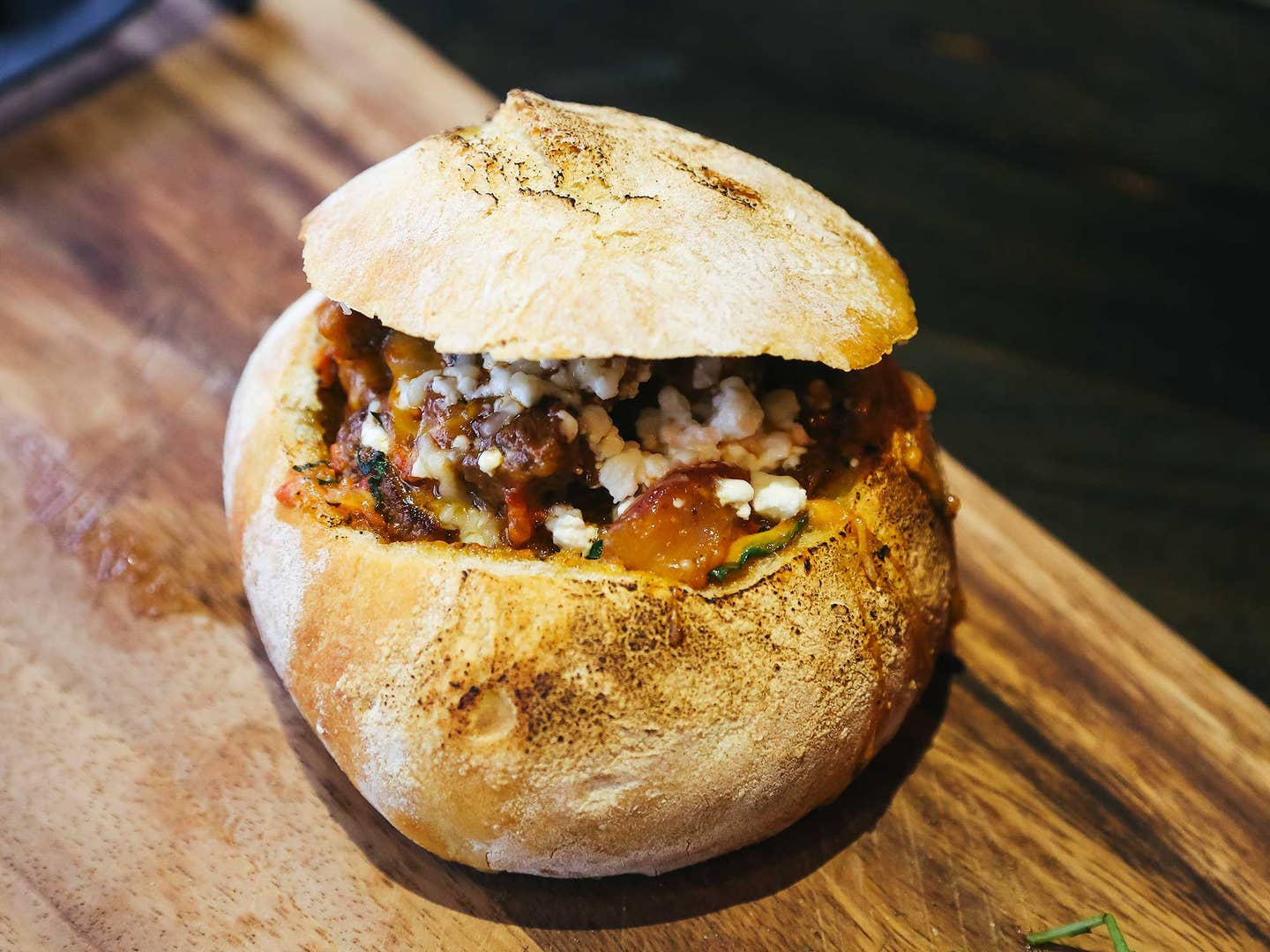
Have You Ever Tried Greek Lamb Kleftiko?
Created during the Turkish occupation of Greece, the dish’s name literally means “stolen”
You've probably heard of a lot of famous Greek dishes. Gyros? Sure. Horiatiki, or Greek salad? Definitely. Saganaki? You may not know it by name, but you'd probably recognize it when you hear the signature sizzle of lemon as it hits the frying cheese. But what about kleftiko?
This is one of the key items on the menu at Merakia, a Greek "steakhouse" in Manhattan, New York. The dish involves a toasted bread bowl that has been hollowed out, then stuffed with a mix of stewed marinated lamb (think the spit roasted one, but cut up into little pieces and cooked along with some peppers, onions, and spices). The top gets covered in feta and kefalograviera cheeses, which melt and ooze down the sides of the "bowl" (you know, assuming you don't immediately inhale it).
The kleftiko comes from a cooking method that is almost 500 years old, and was born of necessity in rural Greece. From 1821 to 1832, the Greeks fought the Ottoman empire in the Greek War of Independence. During this period, a group of bandits known as "klephts," also spelled kleftes, gained a reputation for fighting Robin Hood-style against the occupying Turks, but they had existed for centuries before the war even started. (Hence, the etymology of "kleptomaniac.")
RECOMMENDED: How to Make the Perfect Greek Meze Spread
Marshall Cavendish, author of World and Its Peoples, writes, "The klephts were descendants of Greeks who fled into the mountains to avoid the Turks in the fifteenth century and who remained active as brigands into the nineteenth century.” And the Encyclopedia Americana clearly states their goal: “[klephts] carried on a perpetual war against Turkish rule, considering everything belonging to a Turk a lawful prize."
This included their food. The klephts would steal animals from Turks to survive, then would cook it in the ground throughout the day so that local authorities wouldn’t see the smoke or smell the meat roasting. The klephts would dig a hole and light a fire at the bottom, then pile soil and branches on top of the embers. Next, they’d throw in the meat, then finally cover all that up with more earth, to completely hide it from sight. The meat would roast like this for hours, and at the end of the day the cooks would return to their earth oven and dig up their meal.
Though Merakia chef Giuseppe Scalco doesn’t cook his in the ground, he tries to keep the recipe as close to the original as possible. He created Merakia’s menu based on his travels to mountain villages where they still cook outside on stone ovens that sit on wood fires. While this might not taste exactly like it came out of the ground, it’s still pretty good coming out of a bread bowl.
Keep Reading
Continue to Next Story










